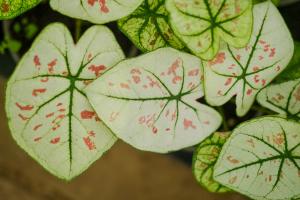How to Plant Potted Elephant Ears
Elephant ears are a tropical plant species that is known for its large, ear-shaped leaves. They are excellent for adding a tropical touch to your home or garden. If you have purchased a potted elephant ear plant or planning to grow one, this guide will help you with the planting process.
What You'll Need
Before you start planting your potted elephant ear plants, you'll need a few things. Here's what you'll need:
A potting container
Potting soil
A drainage dish
Elephant ear plant bulbs or an elephant ear plant in a pot
Planting Your Potted Elephant Ear Plant
Follow these simple steps to plant your potted elephant ear plant:
First, carefully remove the plant from its existing pot by gently tugging on it.
Inspect the roots for any damage, trimming any brown or broken roots.
Place a layer of potting soil in your new potting container, filling it about one-third of the way to ensure proper drainage.
Put the plant in its new home and gently spread out the roots, adding more soil until the base of the elephant ear plant is covered.
Water your potted elephant ear plant thoroughly and place it in a sunny spot where it will receive six to eight hours of sunlight per day.
Watering and Fertilizing Your Elephant Ear Plant
Elephant ear plants love a lot of water, and you should water them frequently to prevent drought stress. While watering, make sure the soil is moist but not water-logged. Overwatering can cause root rot and other problems.
You should also fertilize your elephant ear plant every two weeks during the growing season. Use a balanced fertilizer, such as 10-10-10 and follow the instructions on the label. Don't overdo it, though; too much fertilizer can burn your plant's leaves and flowers.
Caring for Your Elephant Ear Plant
Here are a few more tips on caring for your elephant ear plant:
Keep your plant at a consistent temperature of around 70 degrees Fahrenheit.
Protect your plant from strong winds that can damage the fragile foliage.
Prune any damaged or dead leaves to help the plant conserve energy.
Keep an eye out for pests such as spider mites or aphids, and treat them accordingly.
Re-pot your elephant ear plant every two to three years to ensure proper growth.
Conclusion
Elephant ear plants are a robust and beautiful addition to any garden or home. By following the steps outlined in this guide, you should be able to plant and care for your potted elephant ear plant in no time. With proper care, you'll be able to enjoy your elephant ear plant's lush foliage and vibrant colors for years to come.

 how many times do yo...
how many times do yo... how many planted tre...
how many planted tre... how many pine trees ...
how many pine trees ... how many pecan trees...
how many pecan trees... how many plants comp...
how many plants comp... how many plants can ...
how many plants can ... how many plants and ...
how many plants and ... how many pepper plan...
how many pepper plan...
































